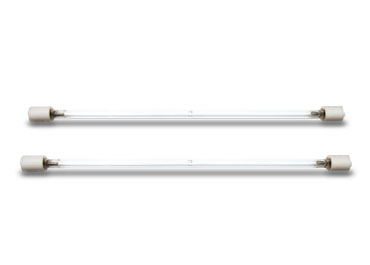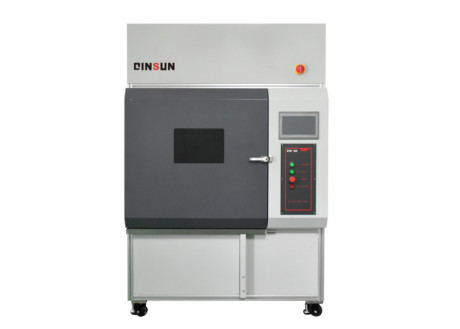
NewsInformation Center
How can the intensity of the xenon arc lamp be adjusted during testing?
2023/07/10
During xenon arc lamp testing, adjusting its intensity is one of the key steps to ensure the accuracy and repeatability of the test. The following is a general procedure for adjusting the intensity of a xenon arc lamp:


1. Know the test requirements:
Before you start adjusting the intensity of the xenon arc lamp, understand the requirements and recommendations for the intensity of the test standard or method. Different test applications and materials may have different strength requirements, so appropriate standards or guidelines must be followed.
Before you start adjusting the intensity of the xenon arc lamp, understand the requirements and recommendations for the intensity of the test standard or method. Different test applications and materials may have different strength requirements, so appropriate standards or guidelines must be followed.

2. Determine initial intensity:
Determine the initial xenon arc lamp intensity setting according to the test requirements. This is usually a selection based on the type of material, expected test time and recommendations of the test standard.
Determine the initial xenon arc lamp intensity setting according to the test requirements. This is usually a selection based on the type of material, expected test time and recommendations of the test standard.
3. Measurement with a radiometer:
Use a radiometer to measure the radiation intensity of a xenon arc lamp. A radiometer is an instrument that measures the radiant energy of light to determine the intensity of the light. Place the radiometer close to the sample location and ensure that it receives radiation similar to that received by the sample surface.
Use a radiometer to measure the radiation intensity of a xenon arc lamp. A radiometer is an instrument that measures the radiant energy of light to determine the intensity of the light. Place the radiometer close to the sample location and ensure that it receives radiation similar to that received by the sample surface.
4. Adjust the filter and filter combination:
According to the test requirements and material characteristics, select the appropriate filter and filter combination to adjust the intensity of the light. Optical filters can be used to control the passage of light in specific wavelength ranges to simulate different solar radiation conditions.
According to the test requirements and material characteristics, select the appropriate filter and filter combination to adjust the intensity of the light. Optical filters can be used to control the passage of light in specific wavelength ranges to simulate different solar radiation conditions.
5. Adjust the light distance:
Adjust the distance between the xenon arc lamp and the sample according to the test requirements and material characteristics. Closer distances increase light intensity, while greater distances decrease light intensity. Make appropriate adjustments according to the purpose and requirements of the test.
Adjust the distance between the xenon arc lamp and the sample according to the test requirements and material characteristics. Closer distances increase light intensity, while greater distances decrease light intensity. Make appropriate adjustments according to the purpose and requirements of the test.
6. Monitor lamp decay:
During the test, monitor the decay of the xenon arc lamp. The intensity of the light will gradually decrease with the increase of use time, so the intensity of the light needs to be checked and adjusted regularly to ensure the consistency and reliability of the test.
During the test, monitor the decay of the xenon arc lamp. The intensity of the light will gradually decrease with the increase of use time, so the intensity of the light needs to be checked and adjusted regularly to ensure the consistency and reliability of the test.
7. Record the adjustment process:
During the process of adjusting the intensity of the xenon arc lamp, record all the adjustment steps and parameter settings. This ensures test traceability and repeatability, and provides accurate data for subsequent analysis and reporting.
During the process of adjusting the intensity of the xenon arc lamp, record all the adjustment steps and parameter settings. This ensures test traceability and repeatability, and provides accurate data for subsequent analysis and reporting.
8. Perform a proof test:
After adjusting the intensity of the xenon arc lamp, perform a proof test to confirm that the settings are correct. Validation is performed using standard reference materials or samples of known properties, comparing test results with expected results, and making necessary adjustments.
After adjusting the intensity of the xenon arc lamp, perform a proof test to confirm that the settings are correct. Validation is performed using standard reference materials or samples of known properties, comparing test results with expected results, and making necessary adjustments.

When adjusting the intensity of a xenon arc lamp, the following points need to be noted:
- Follow the guidance and requirements of the test standard or method.
- Select the appropriate filter and filter combination according to material properties and test purpose.
- Regular monitoring and calibration of radiometers to ensure accurate measurements.
- Documentation of all adjustment steps and parameter settings to ensure test traceability and repeatability.
- Perform a proof test to confirm the correctness of the settings and make adjustments as necessary.
Please note that specific adjustment steps and parameter settings may vary depending on the test application, device model and test requirements. Therefore, when performing xenon arc lamp testing, it is recommended to refer to relevant test standards, equipment operation manuals and professional guidance.
Previous: How often should I calibrate the zipper fatigue tester?
N e x t : Tests and standards for flame retardant performance of masks



